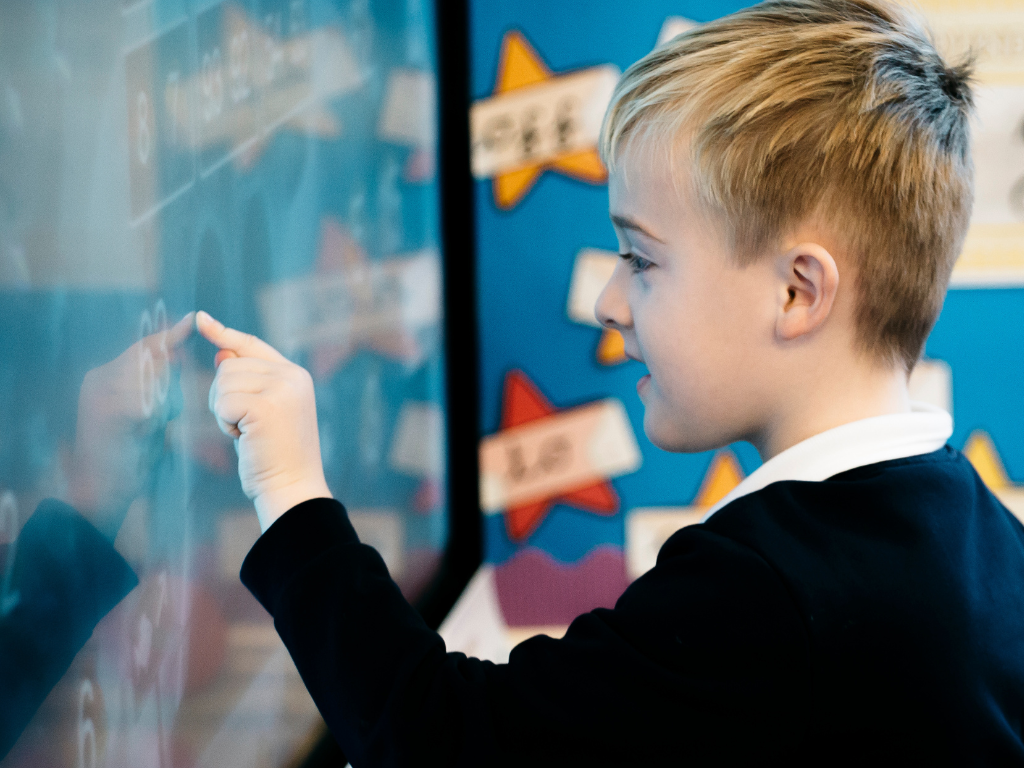The growth of online learning has been in overdrive as a result of COVID-19, and it’s not likely to go back to pre-pandemic levels. That has put educators in a tough position: not enough face-time with students, and what can feel like too much tech.
But is the tech actually the problem? Or is it how we’re applying those tools?
Educators today can struggle with what feels like an explosion of apps and other tech in the classroom. Rather than be a solution for every challenge, classroom technology should be one piece of the complex puzzle that allows teachers to ease their workload, connect students with the real world, and enable active learning in the classroom.
“The ultimate vision for EdTech is that technology is not another thing to learn and use — it’s something that saves teachers time and gives them quick insights into the work they’re already doing,” said Marisa Kaufman, an instructional development specialist at SMART Technologies. “That’s what we see is possible when technology is naturally integrated into instruction and used to engage learners through active learning experiences.”
How can you tell when your EdTech is building up the exciting, safe, and collaborative learning environment you want, or when it’s just tech for tech’s sake? Ask yourself these three questions to find out:
Question No. 1: Does it support student engagement?
One of the most important roles EdTech can play in the classroom is to enable collaborative and flexible learning. Using technology should allow students to engage more deeply with their instructors and fellow students in a way that suits their learning style and needs. If you’re not seeing increased collaboration within your student body, or if it doesn’t seem like students have more options for doing what they need to do with the technology than without it, then it’s a sign the tech might be more of an “add on” than a “must have.”
What’s important here is that the technology directly contributes to the student’s experience of and connection to one another. It should help them make authentic connections and enhance the learning taking place, guided by a sense of exploration and togetherness.
“At the end of the day, the relationship between a teacher and students is one of the most important aspects of learning,” said Dan McMahon, vice president of product at SMART Technologies. “Students need to see how what they are learning connects them to other people and their own futures. We believe technology can inspire greatness in every student, and we have seen that the outcomes are enhanced when you can create better connections between students and teachers, and students and the learning.”
Question No. 2: Will it increase accessibility for students?
Another critical role of EdTech in the classroom is to enable learning no matter where learning takes place. This is why online learning became so ubiquitous nearly overnight during the COVID-19 pandemic. The EdTech you add to your classroom toolkit should make it easier for students to understand, explore, work collaboratively, and discuss what’s being learned — whether they’re learning at home or in the classroom. If the technology adds obstacles to that process, it also will likely negatively impact learning outcomes.
Accessibility can take shape in a few ways. For instance, it may involve gathering students into virtual small group breakouts using a virtual platform such as Lumio to brainstorm ideas together. It may involve joining the class together at an interactive display to collaborate on the next steps for executing their ideas. Or, it can mean students are able to access all of the necessary instructional materials online, whether they’re at school, at home, at the local library, or elsewhere. It’s critical that this all happens through a medium students find intuitive and exciting to interact with.
“Pandemic learning has shown us how to deliver quality educational experiences through both asynchronous and synchronous learning,” McMahon said. “These exploration-focused experiences give students choice in the space and pace at which their learning takes place, allowing them increased agency in their learning. Ask yourself: Are you creating an exciting classroom that students want to be a part of?”
Question No. 3: Is it likely to help accelerate learning for students?
Especially after the pandemic widened the learning gap, educational leaders are looking for scalable, evidence-based strategies to accelerate learning and help students succeed. Through learning acceleration, instructors provide additional scaffolding to help students reach their academic goals. Educators focus on 1) quickly diagnosing educational needs, 2) building on previous knowledge, and 3) providing individualized support. And they can use EdTech to make strategic choices about how to maximize instructional time.
For example, McMahon noted that teaching material in a way equivalent to “running drills” doesn’t lead to impactful learning. Instead, an instructor could use EdTech tools to introduce opportunities for spaced-out practice, elaboration of learning, the connection of learning across topics, and for students to showcase their learning in a variety of formats.
Alternatively, digital manipulatives and models allow students to learn through trial and error, answering the question, “What would happen if…?” practically and efficiently, or allow students to explore locations and geographies they might not otherwise have access to. This kind of technology increases the content teachers have at their fingertips, and it allows students to personalize their learning experience and learn from and with each other when they compare what they have explored. This encourages student engagement, stemming from students' ability to connect the learning to their passions and their futures.
Student outcomes guide seamless EdTech in the classroom
EdTech is meant to amplify the teaching strategies educators want to employ in the classroom. Whether an instructor is focused on collaborative learning or inquiry-based instruction, the right EdTech tools will enable teachers and students to amplify the experience when and how they need to.
“Every piece of technology you introduce to the classroom needs to focus on enhancing the relationship between the teacher and the student, not replacing it,” McMahon said. “If you keep your eye on that goal and check in on a regular basis, you can see technology creating a wide and broad global impact that has an increasingly positive impact on student outcomes.”Get more strategies for implementing EdTech in the classroom to help students reach their full potential by downloading our EdTech ideabook.


